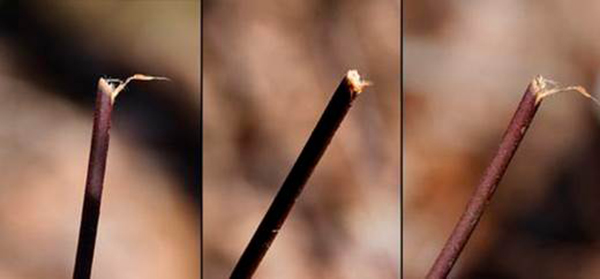People aren’t the only ones who get suckered into blind faith in their camo. Animals can fall victim to the same overconfidence.
I have to laugh at camouflage marketing. The camo clothing market is flooded with patterns that claim to make you disappear no matter where you are or what season it is. Considering the popularity of some of these camo brands and patterns, I’m guessing there are plenty of folks out there who buy into the hype.
People aren’t the only ones who get suckered into blind faith in their camo. Animals can fall victim to the same overconfidence.
That point hit home for me on a recent morning hike. I was walking along the edge of an old field when my eye caught something different about the trail surface. I paused and looked more closely. An American toad sat in the crushed, brown grass at the trail’s edge.
Check out this MyWoodlot blog called Old Fields, Young Woods
The toad didn’t move an inch as I pulled out my camera and took a picture. I got in a little closer for a better shot. He remained where he was. With one hop he could have been in the long grass and lost to sight, but he stayed put. He was looking right at me with one bulging black eye, so I’m sure he knew I was there.
Finally, certain I wouldn’t spook him, I took out my macro lens and went in for a super-close shot. Even then, with my hands and camera only a few inches from him, the toad did not budge.
This American toad (Anaxyrus americanus) is so devoted to his camouflage that he won’t move even when the author gets close to take a photo.
I decided I’d bothered this poor toad enough, and I moved on. A little while later, I came upon a cottontail rabbit just off the trail, munching on some grass.
Again I approached, this time even slower and quieter. As with the toad, the rabbit could blast away from me at any second. But he didn’t move. He kept happily eating, even though he had to know I was only a few feet away.
I didn’t try to get as close to the rabbit as I did with the toad, but I still got within four feet without him seeming the least bit concerned. After a few more pictures, I left him to his meal.
This cottontail rabbit happily keeps on munching as the photographer approaches, confident in its camo.
I was surprised by how close I could get to these animals. Shouldn’t they be scared of a big human like me? But then I remembered a blog post Tom Pavlesich wrote about a snowshoe hare that had grown its white coat before the snow fell. That hare was so confident in its camouflage that Tom could get close for a great photo. Here is a link to the blog.
The animals I saw had that same confidence. Their whole behavior relies on not being noticed. If they move, they’ll be seen. So instead they stay put, refusing to accept that their camo has stopped working.
There’s an extreme version of this overconfidence in the bird world: the northern saw-whet owl. Saw-whets are small, about the size of a soda can. They’re fierce predators of mice and voles, but their diminutive size makes them vulnerable to bigger birds like great-horned owls. To avoid getting chomped, they rely on camouflage.

Northern saw-whet owls are so committed to their camouflage that you can often touch one without it moving. Photo credit: National Park Service
And they are committed to that camo. They absolutely will not move, even to the point that you can touch one and it will remain stationary (not recommended by the way). This behavior has given rise to the mistaken view that these owls are tame, but they’re really just confident—confident in camo.







